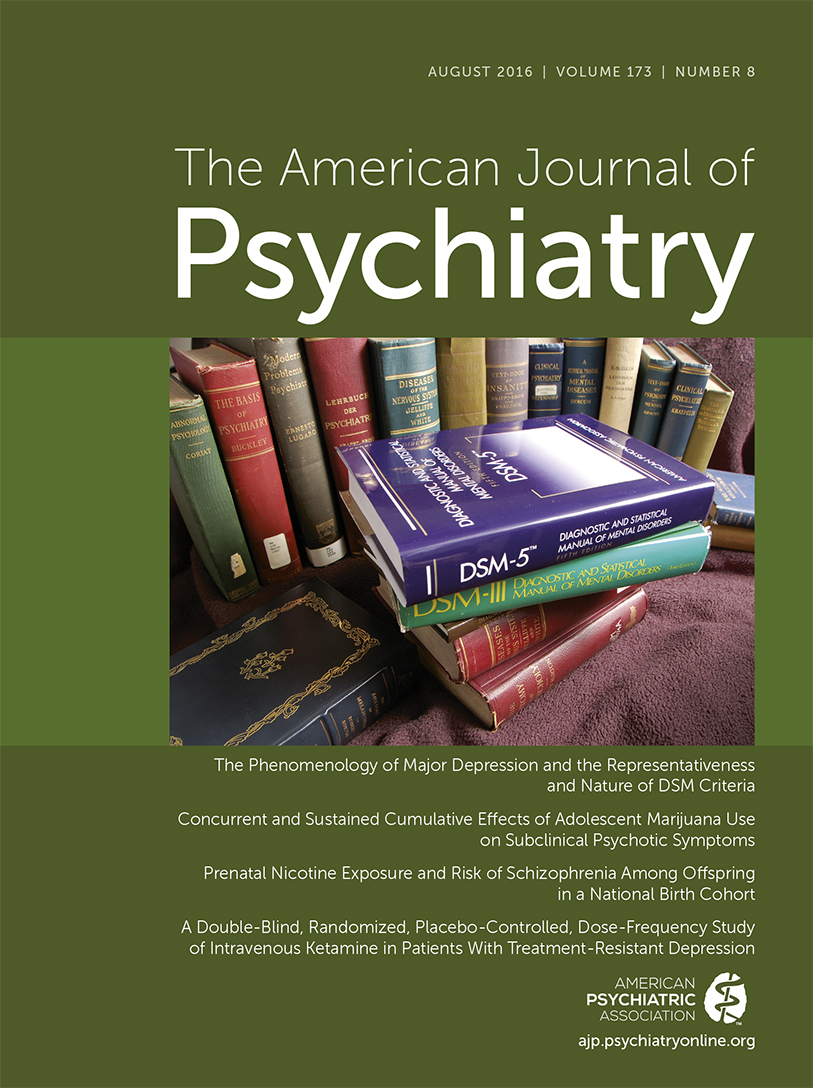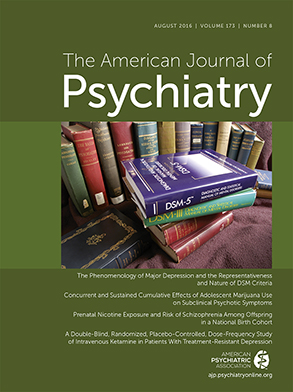T
o the E
ditor: We thank Dr. Neuhaus for his interest in our work. His thoughtful commentary provides an opportunity to clarify a few objectives of the Bipolar-Schizophrenia Network on Intermediate Phenotypes (B-SNIP) consortium. The psychiatric research enterprise (not just for psychosis) should strive to provide neurobiological explanations for brain disorders described as “mental” illnesses in clinical diagnostic manuals. At some point, psychiatric diseases should be defined by genetic, molecular, neurophysiological, and brain structural or functional characteristics in combination with clinical features. In his first main point, Dr. Neuhaus graciously viewed our recent article on biotypes (
1) as contributing to that objective. The B-SNIP consortium’s intentions were more modest. Our first aim, summarized by Figure S3 in the data supplement accompanying the online edition of the article, was to demonstrate that DSM diagnoses insufficiently capture the psychosis spectrum’s neurobiological heterogeneity (and indeed, by continuing their use for defining subgroups, may be impeding progress). DSM diagnoses are hypotheses to be tested, and our data (in combination with other publications) challenge the hypothesis of neurobiological distinctiveness of DSM psychosis diagnoses. Our second aim was to rely on variance in the biomarker panel to capture distinctive psychosis subgroups independent of DSM definitions. Addressing this aim resulted in psychosis biotypes and offered proof of concept that a neuroscience-based approach to psychosis subtyping is at least worth pursuing. The ultimate utility of such approaches will be determined by their success for informing targeted treatment development and optimizing etiological research on the psychosis spectrum.
In his second main point, Dr. Neuhaus highlighted that biotype 3 largely overlapped the healthy sample on “cognitive control” and “sensorimotor reactivity” (again, as illustrated in Figure S3). He proposed that any classification system of psychosis should differentiate health from disease, but biotype 3 failed to meet this criterion. Importantly, every proband had a clinical psychosis diagnosis as measured by the Structured Clinical Interview for DSM-IV. The hypothesis that psychosis is a brain disease means that a neuroscientific approach to classification should differentiate such cases from health. First, as mentioned above, our project had the modest goal of capturing neurobiological distinctiveness in psychosis, and then testing that distinctiveness using alternative measures (external validators). That aim was achieved. Differentiating persons with a pathological condition (psychosis in this case) from healthy individuals, however, clearly is essential. For our purposes, clinical symptoms of psychosis provided the most obvious differentiating features. Nevertheless, as seen in Tables 2 and 3 in the article, there are differences in brain function and structure between biotype 3 and healthy persons, although they are more specific and less extreme than in the other two biotypes. Those differences are minimized when considering only “cognitive control” and “sensorimotor reactivity,” which were simplifications constructed for summarizing the main outcomes of the project.
However, Dr. Neuhaus’s point that biotype 3 largely overlapped the healthy distribution still holds. B-SNIP was founded and initiated in 2008. Biomarkers were selected for inclusion based on 2007 contemporary understanding and study team expertise. In retrospect, we certainly wish other (molecular, neurophysiological, and brain functional) biomarkers were part of B-SNIP 1. Some of those deficiencies, based on B-SNIP 1 outcomes, are being rectified in B-SNIP 2 (data collection is in progress). Dr. Neuhaus highlights some of the philosophical and scientific challenges with which our consortium struggles. There are multiple dilemmas that face biomarkers research generally, not just within the psychosis domain. Different variables will certainly have different probability functions for risk assessment, disease identification, diagnostic classification, determination of primary etiology, and treatment determination and prognosis. The present state of biomarkers knowledge in psychiatry is, at best, rudimentary. The B-SNIP consortium considers our effort to capture pathophysiological heterogeneity in psychosis as an iterative, hypothesis-testing enterprise, one with considerable challenges and limitations, but one that leaves us excited and hopeful. Thank you, Dr. Neuhaus, for sharing our interest.

